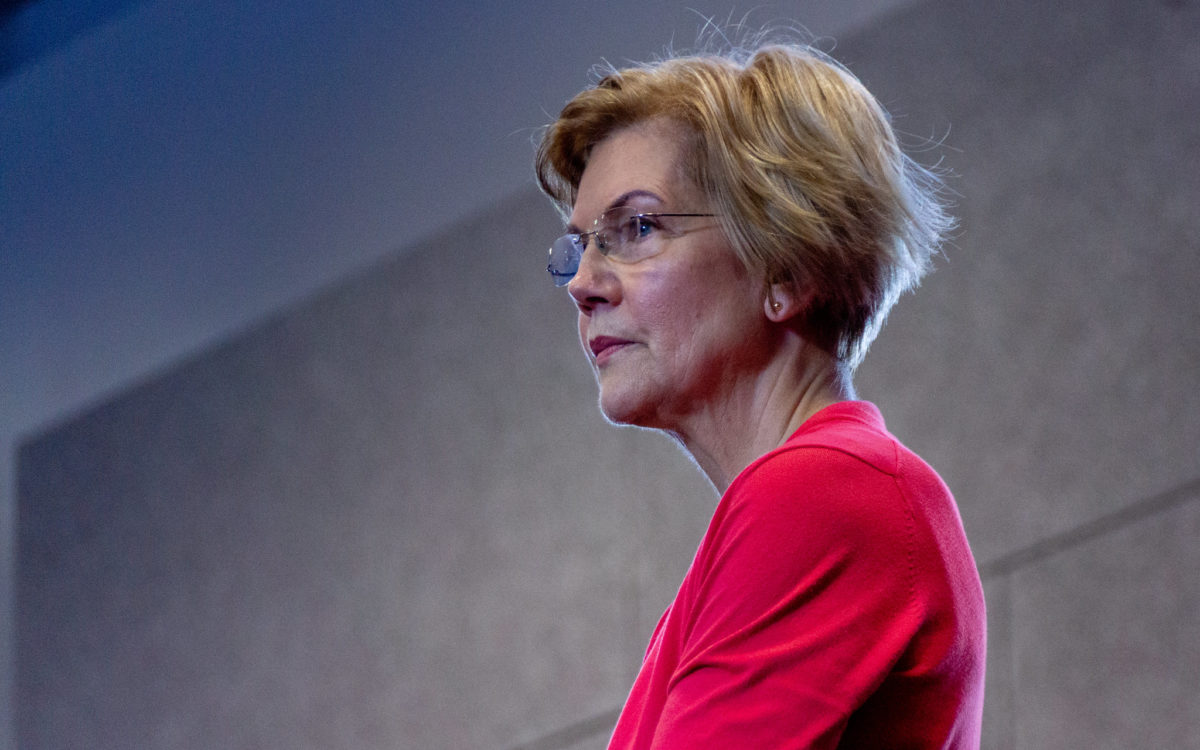From pv magazine USA.
The vote may be 21 months away, but pv magazine USA’s coverage of the 2020 presidential election is up and running, thanks to U.S. senator and presidential candidate Elizabeth Warren doing what she appears to do best: specific, detailed policy proposals.
A post on online platform Medium by Warren started with a frontal assault on president Donald Trump’s plans for the development of fossil fuel resources on public lands and waters, and the Massachusetts senator didn’t hold anything back, writing:
On my first day as president, I will sign an executive order that says no more drilling – a total moratorium on all new fossil fuel leases, including for drilling offshore and on public lands
Warren also laid out a complementary vision for renewable energy development on such lands and waters. The Democrat presidential candidate said she wants ten times more solar, wind and geothermal generation on public lands and offshore waters, from the roughly 11 GW that is in place at present.
The senator said her White House administration would strike a balance between ecology and development, by “prioritizing sites with low impact on local ecology but high potential for renewable energy generation” while also working to “expedite leases and incentivize development in existing designated areas”.
An old fight
Popular content
If Warren does become president and pursue such a policy, however, it is unclear how she would achieve a tenfold increase. The Obama administration established Renewable Energy Zones on public lands, but when pv magazine last examined project uptake, we found a lack of interest by developers in the sites offered.
Warren has also waded into a long running scrap between renewables developers and conservationists, one fought in regulatory meetings and courtrooms, as happened when large concentrating solar power plants were proposed in the Southwestern desert earlier this decade.
While it is not clear legal opposition alone blocked any of those projects – falling PV prices were a more likely culprit – the detail of federal law under the National Environmental Policy Act gives opponents of renewable projects an extra tool to halt plans on public lands – making an extra hurdle for developers that does not apply to private land.
Nor has opposition to energy projects on pristine, high-value land waned. With NIMBYism – not in my back yard syndrome – rampant in New England, California’s largest county recently moved to block large scale solar and wind projects on land near rural communities unless the facilities sell power to their neighbors.
There is one aspect of Warren’s plan which could be key to addressing such opposition. In her post, the senator proposed sharing royalties from renewable energy development with states and communities to “promote economic development”. That could not only wean them off fossil fuel-related income but could also make residents and local governments more amenable to renewables development.
This content is protected by copyright and may not be reused. If you want to cooperate with us and would like to reuse some of our content, please contact: editors@pv-magazine.com.


By submitting this form you agree to pv magazine using your data for the purposes of publishing your comment.
Your personal data will only be disclosed or otherwise transmitted to third parties for the purposes of spam filtering or if this is necessary for technical maintenance of the website. Any other transfer to third parties will not take place unless this is justified on the basis of applicable data protection regulations or if pv magazine is legally obliged to do so.
You may revoke this consent at any time with effect for the future, in which case your personal data will be deleted immediately. Otherwise, your data will be deleted if pv magazine has processed your request or the purpose of data storage is fulfilled.
Further information on data privacy can be found in our Data Protection Policy.